Showing Spotlights 153 - 160 of 237 in category All (newest first):
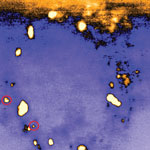 Groundbreaking research has shown a quantum atom has been tracked inside a living human cell and may lead to improvements in the testing and development of new drugs. Researchers conducted studies that confirm that non-invasive quantum measurement is possible on nanodiamonds containing a single nitrogen-vacancy (NV) spin moving within living cells. Studying the quantum properties of a single NV defect within a diamond nanocrystal, the researchers demonstrate a new technique which enables the orientation of a nanoparticle to be determined to an accuracy of less than one degree in an acquisition time of 89 milliseconds. This new technique offers biologists an extra degree of freedom when studying the translational motion of nanoparticles. Monitoring the coherence from a single electron spin paves the ways for nanoscale bio-magnetometry allowing scientists to probe changes in the cell's electromagnetic environment.
Groundbreaking research has shown a quantum atom has been tracked inside a living human cell and may lead to improvements in the testing and development of new drugs. Researchers conducted studies that confirm that non-invasive quantum measurement is possible on nanodiamonds containing a single nitrogen-vacancy (NV) spin moving within living cells. Studying the quantum properties of a single NV defect within a diamond nanocrystal, the researchers demonstrate a new technique which enables the orientation of a nanoparticle to be determined to an accuracy of less than one degree in an acquisition time of 89 milliseconds. This new technique offers biologists an extra degree of freedom when studying the translational motion of nanoparticles. Monitoring the coherence from a single electron spin paves the ways for nanoscale bio-magnetometry allowing scientists to probe changes in the cell's electromagnetic environment.
May 26th, 2011
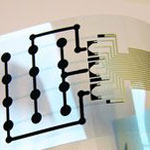 Printed electronics is one of the most important new enabling technologies. It will have a major impact on most business activities from publishing and security printing to healthcare, automotive, military and consumer packaged goods sectors. With recent advances, power and energy storage can be integrated into the printing process, making their potential applications even more ubiquitous. Currently, though, the more complex printed components that require a combination of different class of devices, still experience drawbacks in performance, cost, and large-scale manufacturability. Researchers have now succeeded in fabricating a multi-component sensor array by simple printing techniques - all components (polymer sensor array, organic transistors, electrochromic display) are integrated on the same flexible substrate.
Printed electronics is one of the most important new enabling technologies. It will have a major impact on most business activities from publishing and security printing to healthcare, automotive, military and consumer packaged goods sectors. With recent advances, power and energy storage can be integrated into the printing process, making their potential applications even more ubiquitous. Currently, though, the more complex printed components that require a combination of different class of devices, still experience drawbacks in performance, cost, and large-scale manufacturability. Researchers have now succeeded in fabricating a multi-component sensor array by simple printing techniques - all components (polymer sensor array, organic transistors, electrochromic display) are integrated on the same flexible substrate.
Apr 13th, 2011
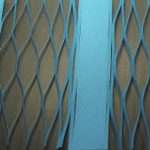 Many strategies to develop stretchable electronics rely on engineering new constructs from existing materials, e.g. ultrathin, stretchable silicon structures. Another approach is to fabricate ultrathin CMOS circuits on stretchable materials such as polymers. Nanotechnology allows a novel route to materials and structures that can be used to develop human-friendly devices with realistic functions and abilities that would not be feasible by mere extension of conventional technology. New research suggests devices that can act as part of human skin or clothing, and can therefore be used ubiquitously. Such devices could eventually find a wide range of applications in recreation, virtual reality, robotics and health care.
Many strategies to develop stretchable electronics rely on engineering new constructs from existing materials, e.g. ultrathin, stretchable silicon structures. Another approach is to fabricate ultrathin CMOS circuits on stretchable materials such as polymers. Nanotechnology allows a novel route to materials and structures that can be used to develop human-friendly devices with realistic functions and abilities that would not be feasible by mere extension of conventional technology. New research suggests devices that can act as part of human skin or clothing, and can therefore be used ubiquitously. Such devices could eventually find a wide range of applications in recreation, virtual reality, robotics and health care.
Apr 6th, 2011
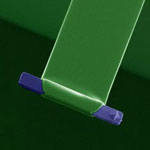 The complex processes inside living systems emerge from the interactions of countless molecules. Understanding these interactions at the single molecule level is of great importance because mechanisms governing their function can be revealed best by interrogating individual molecules. Scientists rely on single-molecule techniques that allow them to isolate individual molecules and sequentially transport them for measurement and, potentially, manipulation. Most commonly, molecules are interfaced with tools like optical tweezers and atomic force microscopes. These devices are precision force sensors. Many interactions among biological molecules are short lived. Their lifetimes can be as short as a nanosecond. The existing single molecule techniques are limited in their temporal resolution, probing the timescales on the order of several milliseconds to a second. In new work, researchers have extended the reach of single molecule experiments to the microsecond timescale.
The complex processes inside living systems emerge from the interactions of countless molecules. Understanding these interactions at the single molecule level is of great importance because mechanisms governing their function can be revealed best by interrogating individual molecules. Scientists rely on single-molecule techniques that allow them to isolate individual molecules and sequentially transport them for measurement and, potentially, manipulation. Most commonly, molecules are interfaced with tools like optical tweezers and atomic force microscopes. These devices are precision force sensors. Many interactions among biological molecules are short lived. Their lifetimes can be as short as a nanosecond. The existing single molecule techniques are limited in their temporal resolution, probing the timescales on the order of several milliseconds to a second. In new work, researchers have extended the reach of single molecule experiments to the microsecond timescale.
Mar 28th, 2011
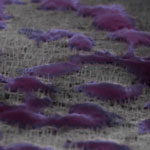 In order to get a true picture of the processes and events that take place inside unmodified, living cells, probing techniques need to be non-destructive, noninvasive and in real-time. Due to their small dimensions, high-aspect ratio nanomaterials such as nanofibers, nanowires and carbon nanotubes are ideal for cellular applications since they can cross the cell membrane without causing significant damage. In particular, semiconductor nanowires attract a lot of interest because of their uniformity, reproducibility and possibility of fine-tuning their intrinsic properties - physical dimensions, crystal structure, electrical and optical properties, etc. Researchers have now shown, for the first time, the spontaneous and close interface of arrays of vertically aligned indium arsenide nanowires with two relevant cell lines, human embryonic kidney cells and rat embryonic dorsal root ganglion neurons.
In order to get a true picture of the processes and events that take place inside unmodified, living cells, probing techniques need to be non-destructive, noninvasive and in real-time. Due to their small dimensions, high-aspect ratio nanomaterials such as nanofibers, nanowires and carbon nanotubes are ideal for cellular applications since they can cross the cell membrane without causing significant damage. In particular, semiconductor nanowires attract a lot of interest because of their uniformity, reproducibility and possibility of fine-tuning their intrinsic properties - physical dimensions, crystal structure, electrical and optical properties, etc. Researchers have now shown, for the first time, the spontaneous and close interface of arrays of vertically aligned indium arsenide nanowires with two relevant cell lines, human embryonic kidney cells and rat embryonic dorsal root ganglion neurons.
Mar 14th, 2011
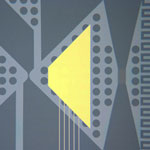 Currently, the most common methods for sizing nanoparticles extract data from bulk measurements. These techniques are inherently averaging and so are unable to effectively resolve mixtures of different-sized particles. While individual nanoparticles can be sized using electron microscopy, this approach is time-consuming and of little utility in assembling significant population statistics. Researchers have now developed a microfluidic device for the all-electronic analysis of complex suspensions of nanoparticles in fluid. This device is capable of detecting and sizing individual and unlabeled particles as small as a few tens of nanometers in diameter at rates estimated to exceed 100,000 particles per second.
Currently, the most common methods for sizing nanoparticles extract data from bulk measurements. These techniques are inherently averaging and so are unable to effectively resolve mixtures of different-sized particles. While individual nanoparticles can be sized using electron microscopy, this approach is time-consuming and of little utility in assembling significant population statistics. Researchers have now developed a microfluidic device for the all-electronic analysis of complex suspensions of nanoparticles in fluid. This device is capable of detecting and sizing individual and unlabeled particles as small as a few tens of nanometers in diameter at rates estimated to exceed 100,000 particles per second.
Mar 7th, 2011
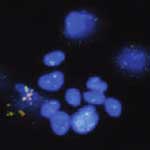 Multifunctional nanomaterials have become widely researched in nanomedicine with the goal of developing highly accurate probes for detecting and isolating cancer cells. Of particular interest here are magnetic nanoparticles, which offer the capability of cell isolation from original or enriched samples without the use of centrifugation or filtration. In particular, the combination of fluorescent quantum dots and magnetic nanoparticles into single nanospheres to obtain fluorescent-magnetic bifunctional nanospheres has created the potential for broader applications in biomedicine and in clinical diagnosis. In new work, researchers have now expanded this technique to multiplexed assays. They demonstrated the ability to detect and collect multiple types of cancer cells, such as leukemia cells and prostate cancer cells, from mixed samples within 25 minutes by using a magnet and an ordinary fluorescence microscope.
Multifunctional nanomaterials have become widely researched in nanomedicine with the goal of developing highly accurate probes for detecting and isolating cancer cells. Of particular interest here are magnetic nanoparticles, which offer the capability of cell isolation from original or enriched samples without the use of centrifugation or filtration. In particular, the combination of fluorescent quantum dots and magnetic nanoparticles into single nanospheres to obtain fluorescent-magnetic bifunctional nanospheres has created the potential for broader applications in biomedicine and in clinical diagnosis. In new work, researchers have now expanded this technique to multiplexed assays. They demonstrated the ability to detect and collect multiple types of cancer cells, such as leukemia cells and prostate cancer cells, from mixed samples within 25 minutes by using a magnet and an ordinary fluorescence microscope.
Mar 4th, 2011
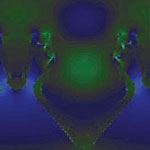 No matter how precise nanosensors and -probes become, bridging the huge gap between nanoscale dimensions and macroscale structures (e.g., wafer size) has been a tremendous challenge for researchers. Researchers in the U.S. have demonstrated a generalized hybrid nanofabrication concept that combines both top-down (deep-UV lithography) and bottom-up (controlled lateral epitaxial growth and atomic layer deposition) fabrication techniques. This unique methodology allows the development of reproducible nanostructured platforms that contain controlled sub-10 nm gaps between plasmonic nanostructures over an entire wafer, i.e. a 6-12 inch area. This approach opens new horizons to more widespread applications in chemical sensing and biomedical diagnostics.
No matter how precise nanosensors and -probes become, bridging the huge gap between nanoscale dimensions and macroscale structures (e.g., wafer size) has been a tremendous challenge for researchers. Researchers in the U.S. have demonstrated a generalized hybrid nanofabrication concept that combines both top-down (deep-UV lithography) and bottom-up (controlled lateral epitaxial growth and atomic layer deposition) fabrication techniques. This unique methodology allows the development of reproducible nanostructured platforms that contain controlled sub-10 nm gaps between plasmonic nanostructures over an entire wafer, i.e. a 6-12 inch area. This approach opens new horizons to more widespread applications in chemical sensing and biomedical diagnostics.
Mar 2nd, 2011
 Groundbreaking research has shown a quantum atom has been tracked inside a living human cell and may lead to improvements in the testing and development of new drugs. Researchers conducted studies that confirm that non-invasive quantum measurement is possible on nanodiamonds containing a single nitrogen-vacancy (NV) spin moving within living cells. Studying the quantum properties of a single NV defect within a diamond nanocrystal, the researchers demonstrate a new technique which enables the orientation of a nanoparticle to be determined to an accuracy of less than one degree in an acquisition time of 89 milliseconds. This new technique offers biologists an extra degree of freedom when studying the translational motion of nanoparticles. Monitoring the coherence from a single electron spin paves the ways for nanoscale bio-magnetometry allowing scientists to probe changes in the cell's electromagnetic environment.
Groundbreaking research has shown a quantum atom has been tracked inside a living human cell and may lead to improvements in the testing and development of new drugs. Researchers conducted studies that confirm that non-invasive quantum measurement is possible on nanodiamonds containing a single nitrogen-vacancy (NV) spin moving within living cells. Studying the quantum properties of a single NV defect within a diamond nanocrystal, the researchers demonstrate a new technique which enables the orientation of a nanoparticle to be determined to an accuracy of less than one degree in an acquisition time of 89 milliseconds. This new technique offers biologists an extra degree of freedom when studying the translational motion of nanoparticles. Monitoring the coherence from a single electron spin paves the ways for nanoscale bio-magnetometry allowing scientists to probe changes in the cell's electromagnetic environment.
 Subscribe to our Nanotechnology Spotlight feed
Subscribe to our Nanotechnology Spotlight feed





